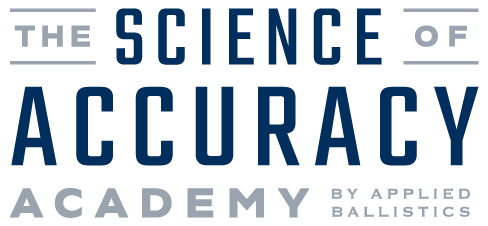#116 - The Purpose of Airgun Research
00:31:18 | Francis and Bryan discuss and explain the importance of testing airguns, along with 22lr and subsonic centerfire projectiles. Subsonic flight is characterized by challenges in projectile stability and rapidly changing drag conditions as you approach the speed of sound. They highlight the main reasons that airgun testing are beneficial to the overall understanding of subsonic projectile flight.



Hi Bryan, Francis… could AB provide any comment on twist rate and gyroscopic stability for anyone wanting to build a subsonic centrefire? For example, 300BLK and the 8.6BLK are popular, and the latter with seemingly ridiculous twist rates like 3:1. Generally speaking, for someone wanting to run heavy for calibre bullets with small powder volumes to operate below supersonic, what do you suggest with respect to twist? Or maybe it is too early to ask this question!? 🙂
Hi Michael! That is exactly what we are currently working to test. There is a lot of work to be done to characterize “optimal” twist rate and what defines optimal stability with subsonic flight. There are tradeoffs with increasing twist rate that go beyond stability, which is why we are deep-diving into the subsonic projectile ballistics. Great question!
Appreciate the reply, thanks Francis! All the best from Australia.
Hello, thanks for continuing to work on this topic. After watching the podcast, however, the whole matter sounded to the viewer that slugs for airguns are at the beginning of development and that all slug manufacturers so far generally have the same shape.
As the owner and lead developer of Altaros, where I have been developing CNC turned lead slugs for the past 5 years, I disagree with this as we have been going a completely different route in shape and design than others and for the past year and a half our slugs, especially the ATP King 40gr .22 and ATP Smooth 50gr .25 have been winning competitions all over the US and the world airgun community ranks us not at the top, but #1 in terms of best slugs. In terms of ballistic coefficient, to use the words of some of our customers, this is not an evolution but a revolution in airgun ammunition.
Even other manufacturers have started to copy the shape of our ATP Smooth slug.
Unlike them, I have no one to copy and we are leading the development, and thanks to the CNC turning technology we have had the opportunity to try very many possibilities and observe many laws that appear with the shape but also the ratio of the dimensions of barrels and slugs. We also have quite a bit of information, the aforementioned stability issues for specific velocities and slug shape vs barrel twist. Muller rules still work here, but it has its specifications.
We have developed slugs ranging from small ones that use a conventional airgun, to long slugs over an inch in length and weighing over 130gr in .25 caliber that can already compete with the lighter calibers in .223 in fireamrs as they have a G7 BC of around 0. 217 and by the time we are able to shoot them with SD 0.6-1 fps (25 shots string) the whole setup gets very close to firearms out to 400-500m and sometimes further, especially if factory ammo is used.
It would be good if this information was also heard. We don’t need advertising as there is a 1-2 month wait for customers as we are not keeping up slugs production, but I would like the audience to have balanced information, especially since most of them won’t be from the airgun community.
At the same time, I believe that we would also deserve some recognition for over 5 years of slug development for airgun and a contribution to the entire airgun community, when we showed how much BC is still on the table even for small light projectiles in .22 caliber and 40gr (ATP King BC G1 0.21 ) compared to a .22LR .
I compete with pellets, what would be the best method of getting an accurate BC given it´s neither a g1 or g7 profile? Is the GA profile good enough for .177 round nose pellets?